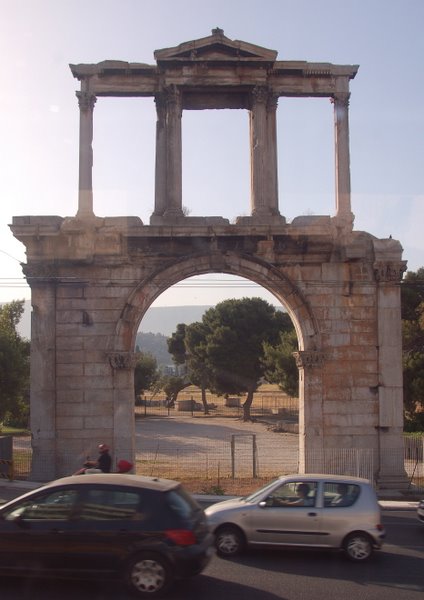
Classical Athens was a powerful city-state. A center for the arts, learning and philosophy, home of Plato’s Academy and Aristotle’s Lyceum, Athens was also the birthplace of Socrates, Pericles, Sophocles and its many other prominent philosophers, writers and politicians of the ancient world. It is widely referred to as the cradle of Western civilization and the birthplace of democracy, largely due to the impact of its cultural and political achievements during the 5th and 4th centuries BC on the rest of the then known European continent.
Ancient monuments and works of art are scattered around the city, the most famous being the Parthenon and the Acropolis.
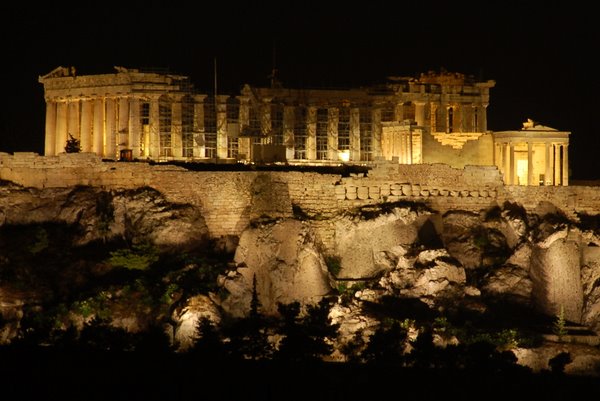 |
Our hotel afforded an excellent view of the Acropolis in the distance. Having a solid tripod would’ve been nice. |
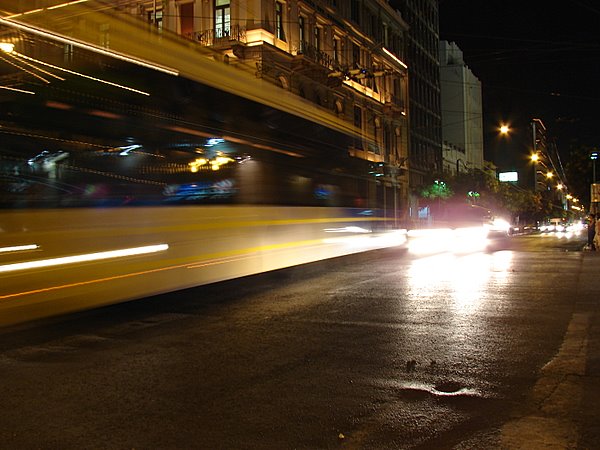 |
The city is alive 24×7, with several Starbucks within walking distance ..and plenty of pollution. |
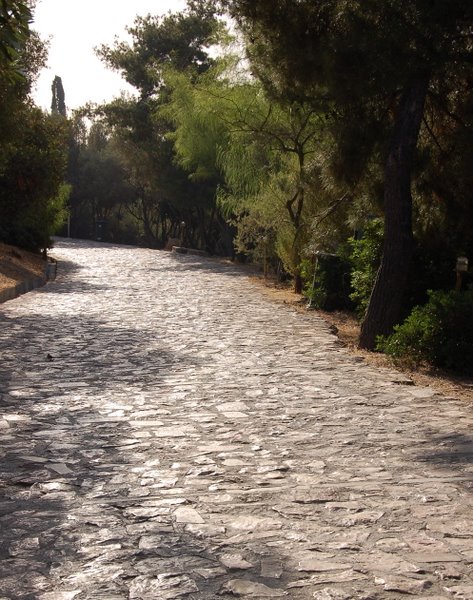 – 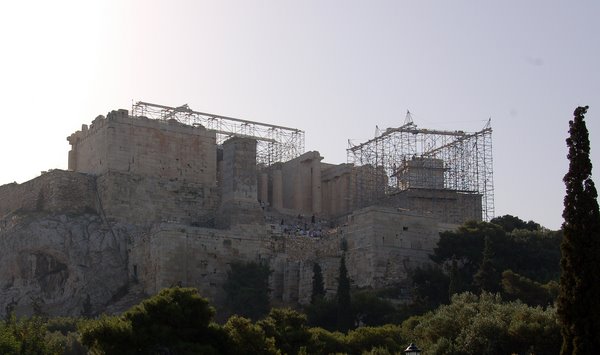 |
Our first stop in Athens was Mars Hill.
While Paul was waiting for them in Athens, his spirit was troubled within him when he saw that the city was full of idols. So he reasoned in the synagogue with the Jews and with those who worshiped God, and in the marketplace every day with those who happened to be there. Then also, some of the Epicurean and Stoic philosophers argued with him. Some said, “What is this pseudo-intellectual trying to say?” Others replied, “He seems to be a preacher of foreign deities” –because he was telling the good news about Jesus and the resurrection. They took him and brought him to the Areopagus, and said, “May we learn about this new teaching you’re speaking of? For what you say sounds strange to us, and we want to know what these ideas mean.” Now all the Athenians and the foreigners residing there spent their time on nothing else but telling or hearing something new. Then Paul stood in the middle of the Areopagus and said: “Men of Athens! I see that you are extremely religious in every respect… |
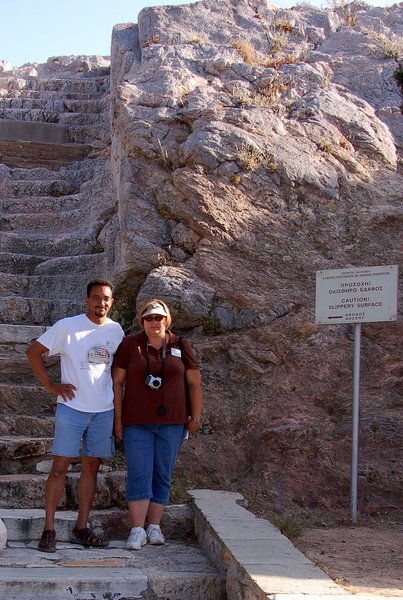 |
Here are some steps up to Mars Hill. The hill is basically a rock protruding up from the ground. I guess it’s solid marble or granite. Over the years, the weather and tourist’s feet have polished the stone so that it’s quite smooth – and slippery!Most likely, Paul made his speech around the corner from here at the Areopagus (marketplace/court). |
 – 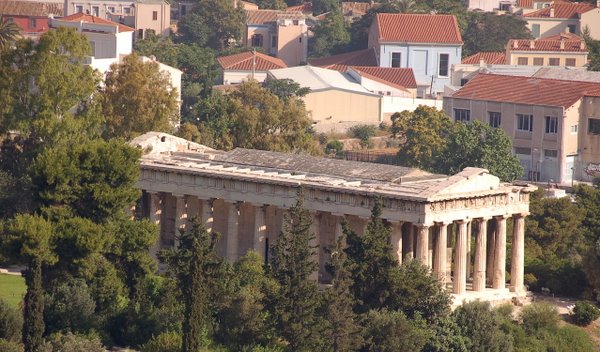 |
From the top of Mars Hill, you have a pretty neat view around the area.The agora is the area between the Temple of Hephaestus on the left and the Stoa of Attalos on the right.
The Temple of Hephaestus was converted to a Christian church in the 7th century. |
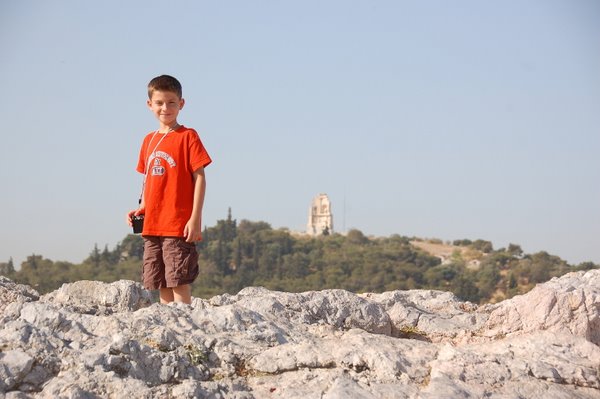 |
|
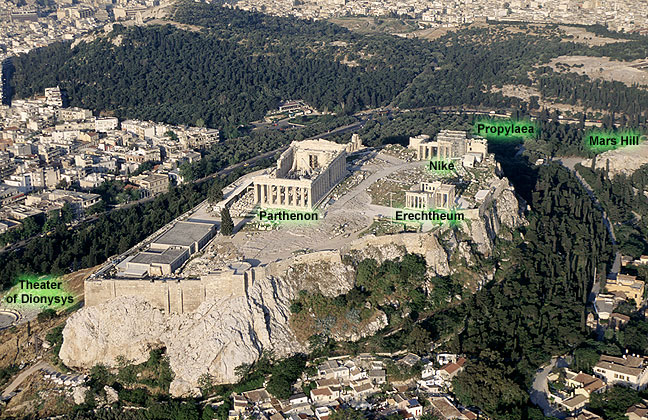 (http://odysseus.culture.gr) |
An aerial view of the Acropolis of Athens, taken from the east looking to the west.Mars Hill is at the far right of the photo, with the Agora further right (off the photo). |
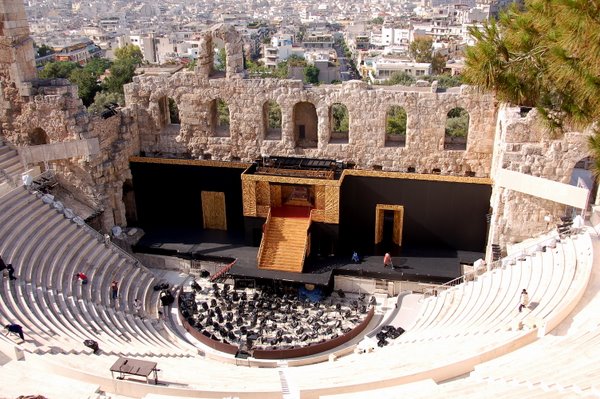 |
The only way to get up to the Acropolis is from the west.As you walk up to the top, you pass the Odeon of Herodes Atticus. It was built in 161 AD by Herodes Atticus in memory of his wife, Aspasia Annia Regilla. It was originally a steep-sloped amphitheater wide with a three-story stone front wall and a wooden roof, and was used as a venue for music concerts and had a capacity of 5,000. |
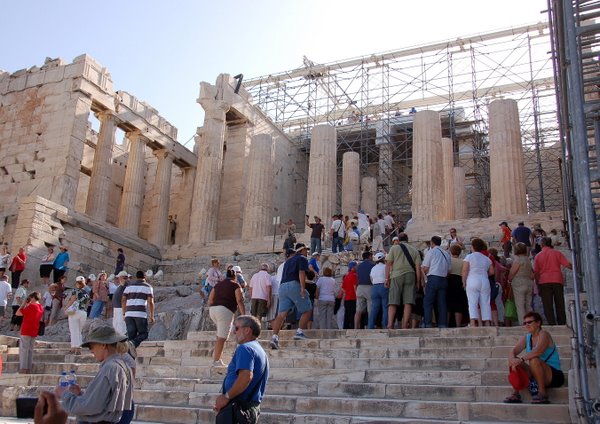 |
Here’s the Propylaea. A Propylaea is any monumental gateway based on the original Propylaea that serves as the entrance to the Acropolis in Athens. The Brandenburg Gate of Berlin, for example, is specifically copied from the central portion of the Propylaea.
The Propylaea of the Acropolis was never finished because war broke out in 431BC. |
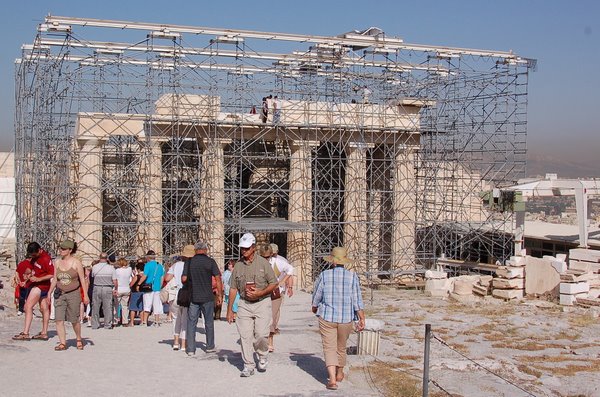 |
Immediately after the Propylaea is the temple of Athena Nike, goddess of victory. |
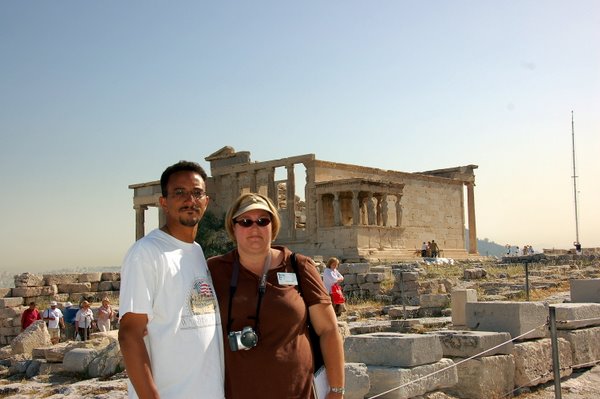 |
On the north side of the Acropolis is the Erechtheum, an ancient Greek temple most likey built in honour of the legendary king Erechtheus. |
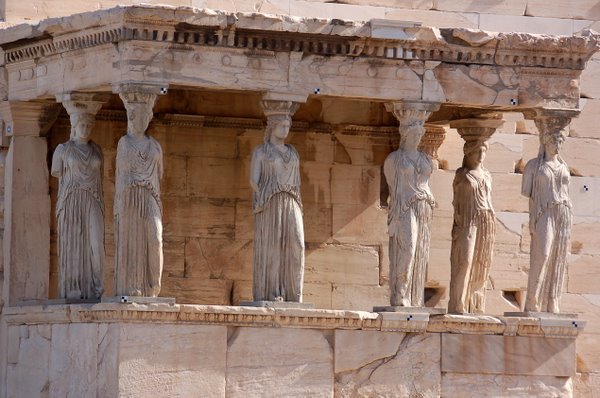 |
The “Porch of the Maidens”, with six draped female figures as supporting columns, each individually sculpted yet engineered in such a way that their slenderest part, the neck, is capable of supporting the weight of the porch roof whilst remaining graceful and feminine. The porch was built to conceal the giant 15-ft beam needed to support the southwest corner over the Kekropion, after the building was drastically reduced in size and budget following the onset of the Peloponnesian war. |
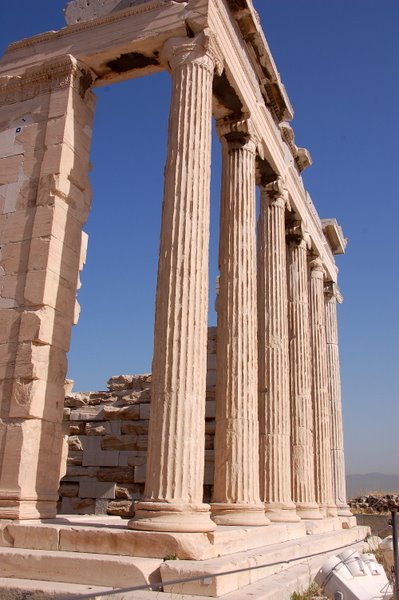 |
The west side of the Erechtheum. |
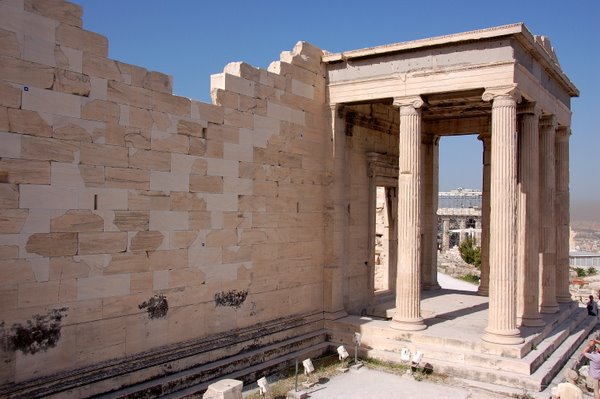 |
North side of the Erechtheum. |
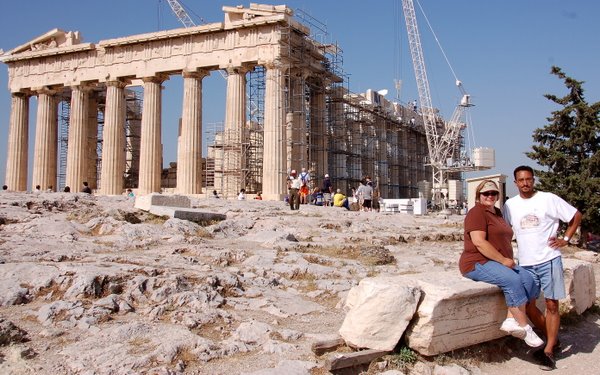 |
The most famous structure on the Acropolis, indeed, in all of Greece, is the Parthenon, a temple built for the Greek goddess Athena. It is the most important surviving building of Classical Greece, generally considered to be the culmination of the development of the Doric order. Its decorative sculptures are considered one of the high points of Greek art. The Parthenon is regarded as an enduring symbol of ancient Greece and of Athenian democracy, and is one of the world’s greatest cultural monuments. Like most structures on the Acropolis, it was built on top of a temple destroyed by the Persian invasion of 480BC. |
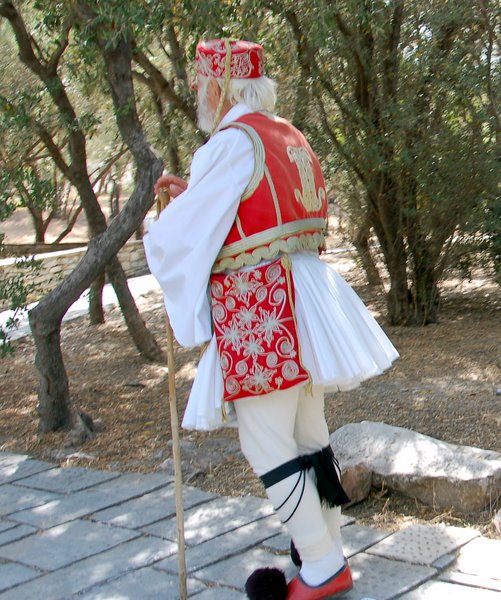 |
On the way back down to the bus, I came across this very peculiar fellow. He didn’t seem to want his photo being taken. I guess he was embarrassed (so.. why dress up that way in public, eh? I’ll have to work on my “discreet photography skills”.) He kept yelling at me about a Euro, then waved me off as if I was a dumb tourist from Egypt or something. |
The entrance to the Acropolis
NorthWest side of the Acropolis
